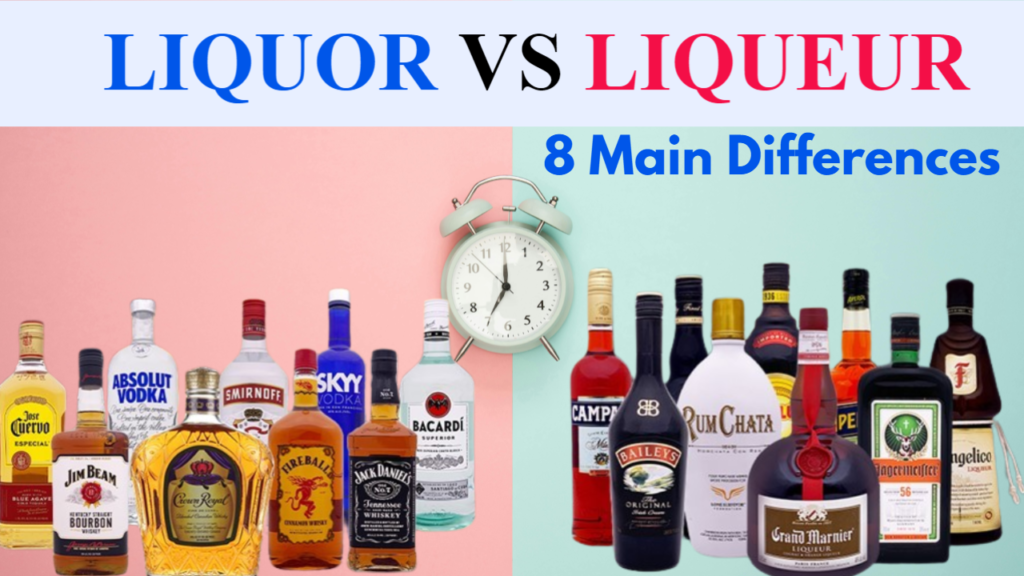

1. Definition
- Liquor: A distilled alcoholic beverage, often referred to as spirits, with a high alcohol content.
- Liqueur: A sweetened and flavored alcoholic beverage made from a base spirit.
- Liquor: Typically has a higher alcohol by volume (ABV), usually between 35% to 50% or higher.
- Liqueur: Generally has a lower ABV, usually between 15% to 30%.
3. Ingredients
- Liquor: Made from fermented grains, fruits, or vegetables that are distilled.
- Liqueur: Made by adding sugar, flavors (like fruits, herbs, spices), and other ingredients to a base liquor.
4. Flavor
- Liquor: Has a more neutral or strong, often raw flavor depending on the type (vodka, rum, whiskey, etc.).
- Liqueur: Sweet and flavorful, often designed to be consumed in small amounts or as part of cocktails.
5. Sugar Content
- Liquor: Contains little to no added sugar.
- Liqueur: Contains significant amounts of added sugar, contributing to its sweetness.
6. Consumption
- Liquor: Typically consumed straight, on the rocks, or as a base in cocktails.
- Liqueur: Often consumed as an after-dinner drink, used in cocktails, or as a flavoring in cooking and baking.
7. Examples
- Liquor: Vodka, gin, rum, tequila, whiskey, brandy.
- Liqueur: Amaretto, Bailey’s Irish Cream, Grand Marnier, Kahlúa, Cointreau.
8. Production Process
- Liquor: Produced through fermentation and distillation.
- Liqueur: Produced by infusing or blending a base spirit with flavoring agents and sweeteners.
In this video, we explain the key differences between liquor and liqueurs. Liquor, also known as spirits, includes drinks like whiskey, vodka, rum, gin, and tequila. These strong, unsweetened beverages have a high alcohol content, typically between 40% and 50% ABV. On the other hand, liqueurs are sweetened, flavored spirits with lower alcohol content, usually between 15% and 30% ABV. Popular examples of liqueurs include Baileys, Amaretto, and Grand Marnier. Discover what sets these two types of alcoholic beverages apart!